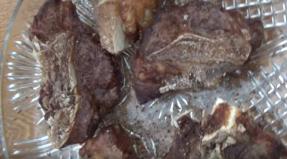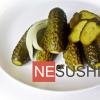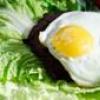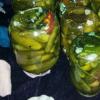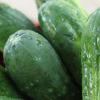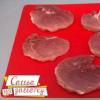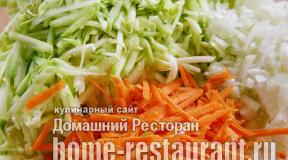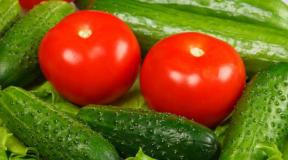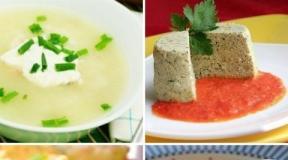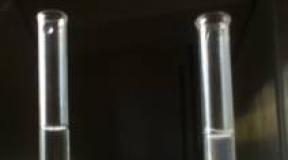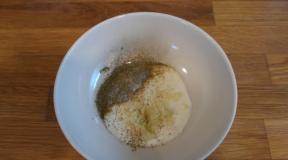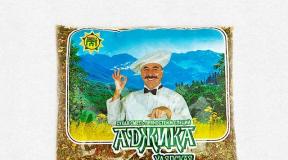What is fiber and how it is useful. The benefits and harms of fiber for the body, the rules of its reception
Usually, the rules of healthy eating are given maximum attention by sportsmen, whose diet quality is directly related to professional achievements. Many supporters of a healthy diet among those who have health problems and with the help of a balanced diet seek to relieve an extra burden from their unhealthy organism. However, the principles of healthy eating should become the starting point absolutely for all people to balance their diet, saturate it with really necessary and important substances for health and thereby prevent premature deterioration of the body. For everyone who wants to join the masses of properly nourishing people, fiber will be the first important term. What it is? What is body fiber for? What products does it contain?
Cellulose is a complex carbohydrate, which represents the hollow fibers of the cell walls of almost all plants. It is an insoluble polysaccharide that is strongly swellable in water and which is only cleaved in the large intestine.
The uniqueness of fiber is its ability to increase in size and not to be digested by the action of food enzymes produced in the stomach and small intestine. Swollen plant mass, passing through the entire gastrointestinal tract, cleans its walls from undigested food debris, stimulates intestinal peristalsis. Freed from toxins, the organism with clean intestinal fibers cleaves and absorbs food faster, absorbing vitamins and minerals from them as much as possible. Fiber is especially useful for those who want to lose weight, because it is not caloric, and due to its swelling properties, it quickly nourishes the body, preventing hunger.
Fiber Utility
What is useful fiber for human health? She is:
- Cleans the digestive tract from toxins, regulates digestion.
- It is food for beneficial intestinal microflora.
- Ensures the smooth functioning of the intestines, as well as the synthesis of certain vitamins and enzymes occurring in it.
- Prevents the emergence of feelings of hunger, limits from overeating.
- Reduces cholesterol, clearing the blood vessels and prolonging their lifespan.
- Binds carcinogenic substances, limiting their destructive activity in the body.
- As a result of the complete breakdown of fiber, glucose is formed, which is a kind of fuel for the body’s energy activity.
Dietary fiber - what is it?
Often, the concepts of "fiber" and "dietary fiber" are identified, but this is not true. Dietary fiber - these are the remnants of food, the digestion of which is beyond the power of the stomach and small intestine. Dietary fiber can be water soluble and insoluble. Valuable chemical compounds of the group of insoluble dietary fibers are complex carbohydrates - polysaccharides, which are represented by fiber.
Since fiber is only part of the concept of dietary fiber, the effect of fibers on the body is wider than the functions performed by fiber. Alimentary fiber:
- stimulate the process of salivation;
- prepare the stomach for food;
- regulate digestion;
- remove toxins, bile acids, heavy metal ions from the body.
Cellulose for bowel cleansing
Most of the functions of fiber for health are aimed at cleansing the digestive system. Without sufficient intake of fiber in the body, cleaning the intestine is ineffective. To prevent constipation, to ensure proper peristalsis and to maintain the health of the intestinal flora, it is necessary to eat about 30–35 g of fiber daily. The average inhabitant of the Earth today eats about 15–20 g, which is not enough to ensure the health of the digestive, cardiovascular and immune systems.
What can be harmful fiber?
An excessive increase in fiber intake can lead to intestinal obstruction and dehydration. To avoid this:
- introduce fiber-rich foods into the diet gradually;
- do not exceed the recommended rate;
- drink more water, less coffee, tea, carbonated and alcoholic beverages.
Products |
|
| Cereals | |
| Buckwheat | 17 |
| Bran | 6 |
| Brown rice, oatmeal | 4 |
| Fruits | Cellulose (g) in one medium fruit |
| Avocado | 8 |
| Papaya | 5 |
| Apple, Kiwi, Banana | 4 |
| Vegetables | Cellulose (g) in one portion (200 g) |
| Potatoes | 10 |
| Spinach | 6 |
| Broccoli, green beans | 5 |
| Mushrooms, Kale | 4 |
| Legumes | Cellulose (g) per glass of product |
| Lentils | 16 |
| Beans, peas | 14 |
| The nuts | Cellulose (g) in one portion (30 g) |
| Almond | 5 |
| Pistachios, walnuts | 3-4 |
You can also buy dried fiber from bran, oatmeal, wheat, Jerusalem artichoke in its pure form or with the addition of pieces of fruit. The choice of such products today is huge, and the fiber in it is usually represented in the form of unrefined grains. Eating such a product would be an excellent, satisfying and healthy breakfast or low-calorie snack.
The intake of a proper amount of fiber ensures the health of the body from the inside. Analyze your diet, if necessary, enter the recommended fiber-rich foods. Be attentive to yourself!
Weight loss is often associated with hard diets or grueling exercises. But sometimes to get rid of extra pounds, it is enough just to build a diet correctly, including the right foods. A special place among them is occupied by vegetable fibers. Fiber for weight loss is not only effective in combating obesity, but also useful for overall health.
Benefits for weight loss
One of the reasons for gaining weight is excessive calorie intake. To avoid this, you need to control the appearance of hunger. It depends not only on the amount of food consumed, but on its quality, in particular, the ratio of proteins, fats and carbohydrates, as well as the availability of fiber.
The inclusion in the diet of foods rich in fiber, is useful for losing weight, because it allows the body to saturate faster with less food eaten. This is due to the fact that such products require more thorough chewing, during which a signal about saturation enters the brain.
Thus, adding to the menu vegetable dishes, salads, fresh fruits and vegetables, you can get rid of those extra pounds without restricting yourself to food and not suffering from a constant feeling of hunger.
The benefits of fiber for mild weight loss due to several of its features. First of all, entering the stomach, its fibers quickly swell and fill it, creating a feeling of satiety. As a result, servings are significantly reduced, while the body receives a sufficient amount of nutrients and does not suffer from dietary restrictions.
Walking then through the intestines, fiber restores its microflora, since it is a nutrient medium for the development of beneficial bacteria. They, in turn, secrete enzymes that contribute to the formation of easily digestible fatty acids, which are the source of energy for the intestines.
Regular fiber intake helps reduce cholesterol and blood sugar levels. Combined with cholesterol in bile, fiber fibers help break down fats. In addition, vegetable fibers are very useful for improving the overall condition of the body, because they:
- facilitate the enzymatic function;
- they clean the intestines from toxins, which in life can accumulate up to 20 kg;
- improve the work of the liver, spleen;
- absorb heavy metal salts, prevent the development of colon cancer;
- slow down the digestion and absorption of carbohydrates, thereby slowing the growth of glucose levels after a meal;
- accelerate the time of digestion of food, thereby contributing to the speedy saturation.
According to studies, in most cases it is enough to increase the amount of fiber in the diet by just 30% so that the excess weight starts to go away. At the same time, daily consumed fruits and vegetables allow not only to get rid of kilograms, but also to maintain weight at the optimum mark without much effort.It is interesting! Cleansing the body, fiber also helps cleanse the skin from acne and pimples, which is especially important in adolescence.
Contraindications
Plant fibers have a number of contraindications. Therefore, before losing weight with fiber, it is important to make sure that it does not cause the body more harm than good.
It is recommended to use it with caution during pregnancy, as it can increase gas formation. Moreover, with a large amount of fiber, calcium absorption deteriorates. Also contraindications include:
- flatulence;
- colitis, infectious enterocolitis;
- gastritis, open stomach ulcers;
- persistent digestive problems, regular bloating.
It is not recommended to take a lot of fiber during the postoperative recovery period. If you have one or more contraindications, it is better to abandon the use of fiber or to consult with your doctor beforehand.
Fiber-containing foods
Modern pharmaceuticals offer a large selection of finished fiber in the form of powders, tablets or capsules from different manufacturers. However, the naturally obtained fiber is absorbed better by the body and acts more efficiently.
- peas, lentils, beans, beans;
- seeds of flax, pumpkin, sesame;
- bran;
- oatmeal, barley, whole grains;
- artichokes, broccoli, Brussels sprouts;
- lingonberry, blackberry, raspberry;
- pears, apples;
- avocado.
This is not a complete list, it can be supplemented and expanded. In one or another quantity of fiber is contained in most products, which already appear periodically on the table. By slightly increasing their quantity, one can effortlessly bring the amount of plant fibers in the diet to the required level.
What fiber to choose
There are two main types of fiber - soluble and insoluble. The first is the pectin contained in fruits, the resin that is part of legumes, the alginase contained in seaweed, and the gelled cellulose from barley and oats. Absorbing a large amount of liquid, soluble fiber turns into a gel-like substance that fills the stomach, gives a feeling of satiety and has a good effect on the intestines. Pectin also has the ability to absorb bile acids and cholesterol, preventing them from entering the circulatory system.
Insoluble fiber is cellulose and lignin. It is found in vegetables, fruits, legumes, and grain plants. Like soluble, this fiber also absorbs a large amount of water, swelling like a sponge, but retains its structure and is not digested by the body, speeding up the process of digestion and food movement along the tract, eliminating stagnation. Passing through the gastrointestinal tract, it absorbs all harmful substances, toxins, slags and removes them from the body.
Say which fiber is better for health or weight loss is difficult. Both species must be present in the diet, as each of them is useful for maintaining a balanced intestinal microflora. This is due to the fact that the bacteria that provide the balance, prefer a different breeding environment - as a gel-like substance of soluble fiber, and undigested fibers. The optimal ratio of soluble and insoluble fiber is 1: 3.
The daily rate of fiber for an adult is 30 g. To compensate for its deficiency, you can include suitable products in the menu or with the help of pharmacy tools. Drugstores and online stores represent an extremely wide range of fiber - cereal, nut kernels, pumpkin, with fructose, laminaria, wheat germ, etc.
Choosing fiber, you need to focus on the composition and the ratio in it of the two main types of plant fibers, as well as the main goal - losing weight or cleansing the body. As a rule, on the packaging indicate what each product is better suited.
How to take fiber for weight loss
You can use dietary fiber for weight loss in two ways - by building your diet so that it has enough plant fibers or use fiber in the form of dietary supplements.
In the first case, the menu is composed in such a way that the organism receives at least 25 g of fiber daily.
Sparing diet
The requirements of this diet suggest the construction of the diet in such a way that the menu 70% were foods rich in fiber. The rest can follow the usual mode, but if at the time of the diet to abandon the sweet, alcohol, fatty and fried foods, pickles, the result will be much better! Following such a diet can lose up to 7 kg per month.
Important! The transition to food rich in plant fibers should be gradual, otherwise unpleasant side effects can occur - bloating, upset digestive tract.
The second way to diet on fiber is to use a pharmacy product in powder form. Several spoons are diluted in liquid, added to ready meals or simply washed down with water. In this case, you can both limit yourself to nutrition, and to observe the usual mode. The use of fiber will reduce the feeling of hunger in the first case and reduce appetite in the second.
The last option is the softest, since it does not require any restrictions or efforts. Enough to enter into the diet 2 tsp. Cellulose half an hour before meals, leaving the menu in the usual way. This method is rather aimed at a mild cleansing of the body, rather than effective weight loss, although a few kilograms can also go along with slags and other harmful accumulations.
Strict diet
This method is designed for two weeks and implies a strict dietary restriction. Two teaspoons of pharmaceutical fiber are mixed with a glass of kefir and taken 4 times a day after 3.5-4 hours. The daily rate of kefir in this case is not more than 1 liter. Between meals, you can make snacks from raw vegetables and fruits (100-200 g).
If you do not want to follow a strict diet, you can arrange fasting days based on it once a week. The rules will remain the same - 1 liter of kefir is divided into 4 doses and mixed each glass with 2 tsp. fiber.
Rules for the use of fiber
Choosing fiber as a means to lose weight, it is important to know how to take it correctly, so as not to harm the body. The main and prerequisite is a sufficient amount of water. During the period of use of fiber, the amount of fluid you drink should be at least 2 liters in essence. This will ensure the normal functioning of the gastrointestinal tract, the effectiveness of plant fibers and will relieve from unpleasant consequences: with a lack of liquid, the fibers will not reach the desired consistency and will provoke constipation.
It is not recommended to start immediately with a strict diet or include too many foods containing fiber in the diet. An organism not accustomed to such a quantity of it simply cannot cope with it and can give off unpleasant and painful reactions. Bringing the amount of fiber to the recommended daily allowance of 25-30 g is better gradually, starting with 10 g, watching the sensations and gradually increasing the dosage, if everything is in order.
Important! If, after starting a diet, bloating and heaviness last more than 2 days, it is worth replacing food, perhaps one of them causes an individual rejection reaction.
It is an important component of a healthy nutritional ration of a person that performs the cleaning function of the intestines from various harmful toxins and slags, which are adjusted in the human body.
Its deficiency can lead to quite serious, health threatening diseases. Why do we need fiber and how does it affect the general well-being of a person?
Fiber, what it is used for, what products it contains
Fiber - Dietary Fiber
Fiber is a dietary fiber that is processed by beneficial intestinal bacteria, but not digestible by digestion.
It is found exclusively in natural plant foods. It can be certain parts of plants, such as stems, peel or seeds.
In various types of vegetables, fiber is located in various places. Its main content in carrots is concentrated in the area of the core, and in beets it accumulates in grasping ringlets. Of all the dietary fiber, the most significant are the substances:
- pectins;
- cellulose;
- lignin.
Fiber in plant products is not prone to dissolving and assimilating by the human body.
But in the medium of the beneficial intestinal microflora there are bacteria that have the ability to destroy cellulose, converting soluble compounds into the areas of the large intestine, leading to their partial absorption.
In this regard, it is divided into two types:
- soluble;
- not soluble.
Pectins are soluble fiber. Characterizes insoluble cellulose, as well as lignin. Vegetable fruits that have a thin peel with delicate pulp, are capable of more significant splitting of the substance in them.
What is fiber, will explain the video:
Beneficial features

Fiber is of great benefit to the human body.
The use of fiber brings great benefits to the human body, positively affecting the general state of his health.
At the same time, its utility consists in performing several significant functions at once:
- improvement of intestinal motility;
- body cleansing;
- the formation of a feeling of fullness;
- restore the normal balance of intestinal microflora.
It turns out that by eating foods that have a high content of this beneficial substance, there is a deliverance from a number of quite serious diseases.
The positive effect of fiber is also a bactericidal effect, when chewing food with a high concentration of coarse fibers in the mouth, a long chewing process promotes the formation of a sufficient amount of saliva, saturated with beneficial microelements and enzymes that positively affect the quality of dental enamel and microflora inside the oral cavity.
At the same time, saliva helps the following processes:
- restores acid balance;
- performs bactericidal activity;
- suspends the development of decay.
When it enters the stomach, the fiber begins to draw in water, while increasing greatly in size, which leads to rapid saturation of the body. Going further, there is an improvement in the passage of food through the intestines, which contributes to the formation of regular normal stool.
However, the effect of fiber is also aimed at freeing the body from excess bile. And also harmful. This is due to the fact that foods that contain a large amount of a substance while inside the digestive tract absorb cholesterol very well, preventing it from entering the blood.
People who regularly use large amounts of various fresh vegetables and fruits in their nutritional diets never suffer from cholesterol excess.
Pectin value

Fiber in food
Being elements of the plant's structural system, pectic substances highly efficiently affect the general state of human health.
They prevent the absorption of harmful elements into the blood through the intestines, converting these particles into insoluble compounds that are not dangerous to the body, contribute to their further excretion.
In various degrees, the content of pectins have vegetables, roots, fruits. The largest number of them contain the following products:
- pumpkin;
- eggplants;
- cucumbers;
- pepper;
- tomatoes;
- carrot;
- pears;
- apricots;
- cherry;
- quince;
- peaches;
- plum;
- apples;
- berries, crushed with sugar (strawberries, gooseberries, currants);
- citrus.
Not less valuable properties in this regard are juices with the addition of pulp:
- apple;
- quince;
- carrot;
- tomato;
- cranberry;
- peach.
Of great importance is the fact that when using any type of heat treatment, the number of beneficial substances in products increases significantly. Therefore, it is advisable to use them in the form of mashed potatoes, jellies, marmalade, drinks, canned goods.
Impact on the state of the body

Cellulose - as a “scrub” for the intestines
Fiber plays an important role in the normalization process. However, its action is aimed at the destruction of pathogenic bacteria, thereby suppressing the process of decay in the intestine, favors the elimination of harmful elements.
Indeed, it depends on the health of the intestines how strong the immunity will be. Inclusion in the diet of foods with fiber is an excellent prevention measure in the treatment of the intestines, which are becoming more common today.
Lack of use
To improve your health and maintain excellent well-being, you should set yourself up to maintain proper diet with the presence of the necessary beneficial elements in it, including regular consumption of fiber.
Its insufficient amount in the human body increases the risk of the occurrence of sufficiently serious diseases, such as:
- , intestinal atony, constipation,;
- diabetes;
- vascular atherosclerosis, ischemia, the risk of stroke or heart attack;
- oncological formations in the rectum;
- obesity;
What products contain

Cellulose - as dietary supplement
Apart from fruits and berries, a large number of coarse dietary fibers include products:
- various types of cereals;
- vegetables;
- bran;
- mushrooms;
- seeds, nuts;
- legumes;
- wholemeal bread.
It should be noted that for normal activity the body needs both types of fiber. The optimal ratio of fiber insoluble and soluble, which is contained in the listed natural products, is 1/3.
Fruit rind is useful
The rind of the fruit is a valuable source of fiber; it does not need to be cut off. Cut the fruit into pieces so that it is convenient to eat, but leave the peel. Give children compotes from fruits rich in fiber, they are useful, but preference should still be given to fresh fruits.
How many children need it and how many adults
Child's age + 5 g of fiber is the daily minimum rate that a child over two years of age should receive. Thus, children 6 years old need about 11 g of fiber. But for people who have reached 55, it needs at least 20 g.
Removes fats from the body
Eat high fiber foods with high-fat foods. So you create the conditions under which most of the fat will be bound and will be removed from the body during bowel movements. Increase fiber content in the diet, and then you will gain fewer calories.
FFO - the secret of success
FFO stands for fruits, beans, bran. You should eat one serving of each product daily. This is quite enough to satisfy the body's need for fiber. By the way, fruits are in perfect harmony with yogurt.
Product for the whole family
It is very useful for the aging gastrointestinal tract. School-age children also need it, because fiber contributes to regulation. It remains stable, and, therefore, their behavior and ability to learn are stable. A child can go to school only after receiving at least 5 g of fiber with breakfast, i.e. portion of cereal and portion of fruit. Remember the names of four important fruits that contain fiber: apricots, avocados, artichokes and apples.
This is an important component of a healthy diet. It can help you control weight, regulate cholesterol and do a lot of other necessary work inside the body. It prevents overeating and gives a person a feeling of fullness, but at the same time you cannot become fat by it. Foods with high levels of it require thorough chewing, so the appetite is quickly quenched, and as a result a person eats less. Cellulose remains in the stomach for a long time, and therefore you do not want to eat. People who are accustomed to such food usually eat more slowly, chew more carefully and consume less fat. The best fiber, that is the most useful, is found in barley and fruit pectins.
Helps stabilize sugar
Fiber, especially insoluble, which is in barley, citrus, legumes, in the stomach turns food into a viscous substance, resulting in slowing down the breakdown of sugar and its entry into the blood. This makes it possible to prevent changes in the level of sugar and protect the adrenal glands that produce insulin. Breakfast, including foods rich in fiber, such as oatmeal and fruit, is useful for children who have problems with behavior and learning. When the sugar level is stable, the emotional background of the person is also stable.
Slows down fat absorption
Since it interferes with the absorption of fat, it means that the body gets less calories. This is another advantage of pulp, which can benefit all those who control their weight. It is proved that in the stool of people who eat a lot of foods rich in fiber, the content of fatty components is higher than that of those whose diets have fewer such foods.
Helps lower cholesterol
A diet high in soluble fiber (oat bran, whole grains of oats, legumes, barley, fruits, including plums) helps to reduce the level of “bad” cholesterol, without reducing the “good” (high density lipoproteins). In the process of digestion, foods high in fiber, absorbing liquid, collect, including, "bad" cholesterol, which is then excreted from the body. However, doctors always warn patients that a diet high in soluble fiber is not an indulgence to abuse cholesterol-rich foods. Such a diet also suggests reducing fat intake. There is evidence that an increase in the consumption of soluble fiber by 10 g per day actually reduces the risk of developing cardiovascular diseases by 17-29%.
Insoluble fiber helps the bowels work. Insoluble, which is abundant in the skin of fruits and vegetables, as well as in the sheath of cereals, helps prevent constipation. Thanks to this cellulose, the stool masses become soft and are easily removed from the body. She is real. People who follow a high fiber diet in their diet usually have no problem with.
Reduces the risk of developing cancer
While soluble fiber helps prevent the development of cardiovascular diseases, insoluble prevents. In a population with a traditionally high intake of foods rich in fiber, the cancer incidence rate is much lower. Increasing the consumption of insoluble fiber (for example, wheat bran) is one of the most effective changes you can make to your diet to reduce the risk of developing cancer.
Improves peristalsis
One of the theories explaining the reasons for the development of colon cancer suggests that the longer toxic substances are in contact with its mucous membrane, the more likely they are to become carcinogenic. Thus, it turns out that regular stool prevents cancer. Plastic stool, which is marked with a high content in the diet of fiber, contributes to the timely release of the body, including from toxins. It turns out that the fiber in its action is comparable to a brush, which sweeps "litter" from the intestines. Foods with a high fiber content help to halve the residence time of potentially hazardous waste products inside the body, which, accordingly, halves the contact of carcinogens with the mucous membrane of the colon.
Binds carcinogens and affects hormones
Fiber helps to eliminate carcinogens (toxins that can promote the degeneration of body cells) and reduces the time they come into contact with the intestinal mucosa. In addition, cellulose absorbs other potential irritants of the mucous membrane, which can create favorable conditions for the transformation of healthy cells into malignant.
There is evidence that people at risk and fearing the development of colon cancer by going on a diet with a high content of fiber, to protect themselves in many respects compared with those whose diet was built on products with a low content of fiber. More and more special studies confirm the direct link between eating foods high in fiber and reducing the risk of developing colon cancer. In addition, there is information about the effect of such a diet regarding the development of breast cancer. There are several explanations. In particular, fiber may affect, thus reducing the risk of developing breast cancer.
The essence of fiber Fiber - is a miracle remedy that allows you to enrich the human body with all the useful substances, get rid of excess weight, make the body beautiful, slim and healthy. And scientifically, fiber ...
The essence of fiber
Cellulose is a miracle remedy that allows you to enrich the human body with all useful substances, get rid of excess weight, make the body beautiful, slim and healthy. Scientifically, fiber is the fibrous substance that makes up the plant cell.
Fiber acts as a brush that cleanses the intestines of toxins and slags that accumulate in our bodies every day.
There are two types of fiber, whose properties differ from each other.
- Its first type is fiber in an insoluble form.
- The second type - fiber in soluble form.
Insoluble Fiber
Fiber in an insoluble form tends to swell like a sponge and absorb all the harmful substances stored in our body. The main benefit of this type of fiber is in its ability to reduce cholesterol and prevent the formation of stones. Also, so that all carbohydrates entering the body, fats are quickly absorbed in the stomach and intestines, the use of fiber will be very useful.
Fiber soluble
Soluble fiber - prevails in apples, potatoes, oranges, tangerines, lemons, grapefruits.
This type of fiber more carefully affects the body than insoluble. If insoluble fiber gets into the stomach, unpleasant sensations are possible.
With sufficient use of fiber, you can prevent the exacerbation of appendicitis.
Products enriched with fiber only have a beneficial effect on the body of each person, ensuring its proper functioning. Fiber is very rich in vitamins and various trace elements.
How to apply and in what quantity
Per day, it is recommended to use from 20 to 30 grams of fiber, increasing the dose gradually, by about 5 grams each week. And with such a dose should be consumed a large amount of water, at least 1.5 liters of water per day, or better 2. Otherwise, the result will not be comforting, you may experience constipation. Everything should be in moderation. However, people prone to diseases associated with the digestive system should reduce this daily rate. As they say, you should not engage in self-treatment, but rather consult a gastroenterologist for advice.
Lose weight in fiber
Proper use of fiber not only prevents certain diseases, but also helps to get rid of excess weight.
In the 70s, nutritionists called fiber fiber a means of beauty and harmony. But you need to understand that the desired result will not be as fast as we would like. To lose weight on such a diet a person will be no more than four to six kg per month.
And to lose those extra pounds, it will be enough to eat foods that contain a large percentage of fiber. Once in the body, fiber swells and saturates it, so there is no feeling of hunger.
For example, if the body enters 25 grams of fiber, it will spend 175 calories, which is not even bad for people seeking to lose weight. Foods containing fiber leave the intestines faster (not longer than 36 hours) than other foods (from 72 to 96 hours).
If you want to lose weight, then eat oats during breakfast, and during lunch and dinner green salads.
Vegetables and other foods that contain fiber are recommended to be eaten raw or those that have been heat treated so that fiber fibers do not collapse.
In order to achieve the desired result, it is recommended to use insoluble and soluble fiber in proportion to get rid of excess weight. 25% to 75% respectively.
Alternatively, to provide the body with the right amount of fiber, you can eat two or three small loaves of bread, five vegetables, and three fruits a day. In moderate amounts add to the diet nuts, seeds, dried fruits. Do not forget to add bran to food - they do not give any taste, and the benefits of them will be great.
Two kinds of fiber based diets
- use drugs containing fiber, which can be purchased at the pharmacy;
- use foods that contain a large amount of the same fiber.
If you are inclined to the first method of diet, then there is nothing complicated in it, everything is available and clearly described in the instructions for use. most often it is eating one teaspoon of fiber three times a day: for breakfast, lunch and dinner. Also this version of the diet is suitable for people who lead an extremely active and busy lifestyle.
In the second version of the diet, fiber enters the body by eating food.
For breakfast, you can prepare a fruit salad, the ingredients of which are pears, apples and peaches, or you can eat yogurt. And you can combine both that and it will be both satisfying and useful, but at the same time low-calorie. The next morning, you can steam the porridge with the addition of fruit.
For lunch it will be useful and effective to fight overweight to eat seaweed salad and boil the potatoes in their uniform. Also, as a dinner, you can cook spinach soup or cheese salad with legumes.
At dinner, eat boiled beans, you can vegetable salad or rice. Barley porridge is also suitable as a dietary dish, but only a portion should be small.
But we must remember that this diet is not everyone will be useful. It can not be used by people who have gastritis, dysbiosis, colitis or pancreatitis.
But, and if you do not have such diseases, then a diet based on fiber will be effective and beneficial.
The positive aspects of the diet are:
- weight reduction due to low-calorie, but nourishing foods, which are based on fiber;
- bowel cleansing and blood;
- stool normalization;
- excellent mood (because the body is saturated with carbohydrates, which eliminates depression);
- acceleration of the gastrointestinal tract;
- availability of such a diet.
In any pharmacy and supermarkets can be found in sufficient quantity and variety of plant fiber.
The result of this diet will be a reduction in the hips by at least 2 cm in two weeks and getting rid of cellulite.
Let cellulose take a decent place in your diet!

